How Rescuing a Spanish Greyhound Opened Our Eyes to the Hidden Soul of Costa del Sol
When most people picture the Costa del Sol, they see sunshine, sangria, and busy beaches. But behind the sun loungers and beach clubs, there’s a quieter, deeper story that only reveals itself when you travel slowly — and sometimes, through the eyes of a dog. Our journey with Andalusia’s…
When most people picture the Costa del Sol, they see sunshine, sangria, and busy beaches. But behind the sun loungers and beach clubs, there’s a quieter, deeper story that only reveals itself when you travel slowly — and sometimes, through the eyes of a dog.
Our journey with Andalusia’s beloved but often mistreated Galgos — Spanish Greyhounds — changed how we see this corner of Spain forever. It’s a story of heartbreak, hope, and the hidden villages that shape the real soul of southern Spain.
Finding a Galga in the Shadows
A few years ago, we were settling into life in Málaga when we heard about an abandoned litter of Galgo pups near Sevilla. A hunter had thrown four tiny puppies into a garbage bin — they were so young they couldn’t even walk yet. Only three survived. One of them would become part of our family.
Bringing home our sweet, shy Galga cracked something open in us. Suddenly, every sleepy white village, dusty trail, and hidden valley around us felt different. We were seeing the Costa del Sol not just as visitors, but through the soft brown eyes of a dog who’d already survived so much.
The Silent Crisis: Galgos in Andalusia
To truly understand why so many dogs like ours need saving, you have to know the long, tangled history of the Galgo in Spain.
The Galgo Español is an ancient breed — its roots run back to the Moors, who prized these slender sighthounds for their incredible speed and hunting skill. For centuries, the Galgo was a status symbol, a noble companion to chase hares across the plains. But the old hunting traditions persist, especially in rural regions of Castilla-La Mancha and Andalusia, and not always in a kind way.
Every winter, after the hunting season ends, tens of thousands of Galgos are abandoned, discarded, or worse. And it’s not just older dogs — unwanted puppies are dumped too. Our Galga’s fate could have been sealed in that garbage bin if local rescuers hadn’t stepped in.
The heartbreaking part? This happens in a region where so many locals adore these dogs. When we walk through our neighborhood or the surrounding white villages, strangers often stop to stroke her head and share stories about the special spirit of the Galgo. It’s this contrast — the cruelty and the compassion — that makes their story so important to tell.
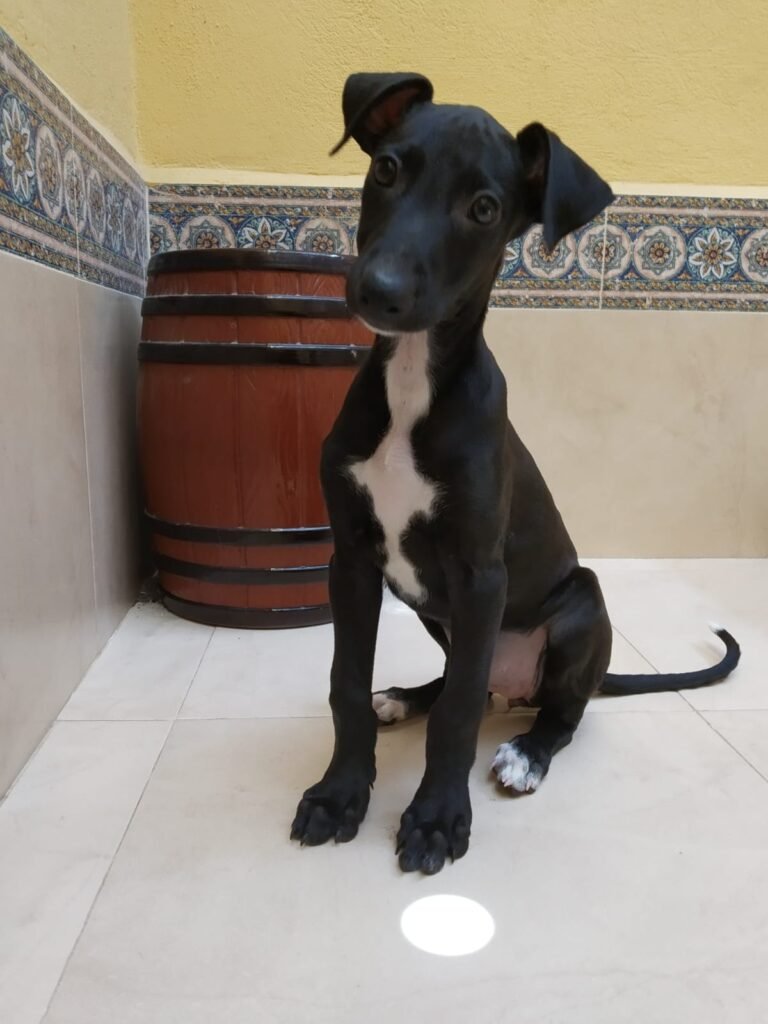
Shining a Light: Yo Galgo and the People Making a Difference
One of the most powerful glimpses into this hidden crisis is Yo Galgo, a moving documentary by Yeray López Portillo. The film follows the heartbreaking — and inspiring — stories of Spain’s Galgos: the discards, the survivors, and the rescuers who give everything to help them.
If you’ve never seen it, Yo Galgo will stay with you long after you turn off the screen. It shows how deep-rooted this issue is, but also how change happens when enough people care. Amazing organizations like Fundación Benjamín Mehnert, Galgos del Sol, and 112 Carlota Galgos fight every day to give these dogs a second chance — and travelers can help too.
A Mini Slow Travel Guide: Hidden Villages & Trails
So, how can you step into this slower, more authentic side of Costa del Sol? Our rescued Galga has taken us off the beaten track, one paw print at a time.
Start with the pueblos blancos — the iconic white villages scattered like snow across the hills of Málaga and Cádiz provinces. Frigiliana, often called the prettiest village in Axarquía, is a good place to begin: stroll its narrow lanes, admire its Moorish architecture, then linger at a local café with miel de caña drizzled on toast.
Head deeper inland and you’ll find Comares, perched like a watchtower above the valleys. From its castle remains, you can trace the distant shimmer of the Mediterranean — but it feels like another world. Nearby, discover the lesser-known Alfarnatejo, a rugged hamlet where old men play dominoes in the shade while the hills come alive with wildflowers each spring.
For walkers, the trails linking these villages are where the magic happens. The Ruta de la Pasa (Raisin Route) winds past ancient vineyards and hidden chapels. The trails around Sedella and Canillas de Aceituno lead to dramatic cliffs and cool streams — perfect for a day with your four-legged companion. Bring sturdy shoes, water, and a curious spirit.
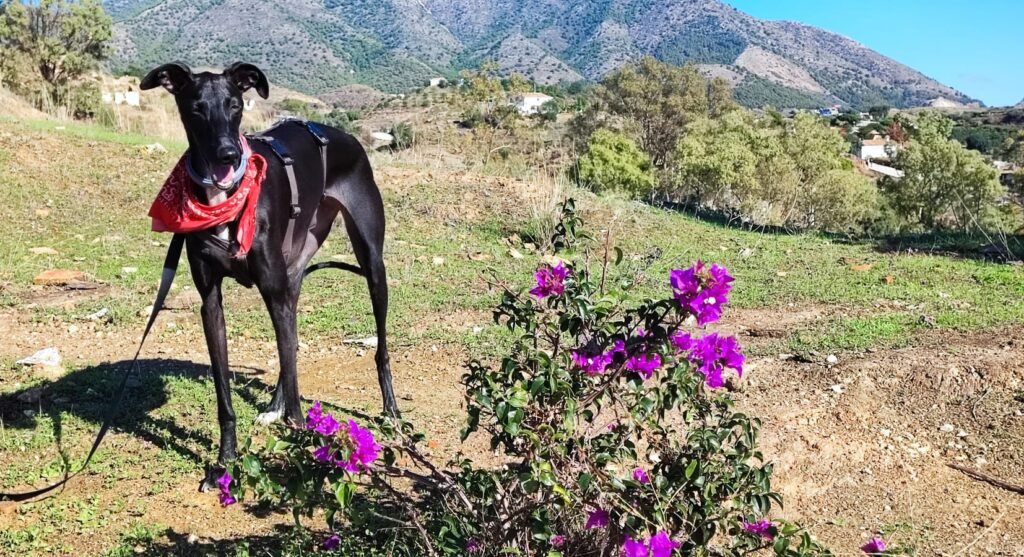
Cultural Tips for More Conscious Travel
Traveling consciously in this region means more than just taking beautiful photos. Here are a few ways to tread lightly and connect deeply:
- Support local rescues. A visit to Fundación Benjamín Mehnert or Galgos del Sol can open your eyes and heart. Many centers offer guided tours or volunteer days — an unforgettable experience.
- Stay local. Choose small family-run guesthouses or rural B&Bs (casas rurales) instead of big resorts. You’ll find real hospitality and help sustain village life.
- Eat local, too. Try village ventas (inns) and local markets. Taste the region’s cheeses, honey, wine, and olive oil. Every plate tells a story.
- Walk softly. Stick to marked trails, take your litter with you, and leave only footprints (or paw prints!). You’ll be surprised how much wildlife — and local history — you discover this way.
Related: Want to Explore the World and Travel via Housesitting?
The Story You’ll Take Home
In the end, travel is about the stories we carry home. Saving our Galga didn’t just save her — it gave us a deeper way of seeing this region. We remember quiet mornings when she first trusted us enough to curl up by our feet, the villagers who’d stop us to ask about her story, the hidden lanes we’d have never wandered down if she didn’t tug us there.
And maybe that’s the real gift of the Galgo: they remind us to slow down, to notice the rustling olive groves, to listen when the old man in the plaza wants to share a story from his childhood, or when the local baker points you toward the best goat cheese you’ll ever taste.
So if you come to the Costa del Sol, come for the sun if you must — but stay for the soul. Meet the people who keep its traditions alive, the dogs who still race across its fields, and the small everyday moments that make a place feel like home.
Related: Spanish Visa Options
Seeing Costa del Sol with New Eyes
For us, rescuing our Galga didn’t just give her a new life — it gave us a new lens on the world. We don’t rush from sight to sight anymore. We linger in shady plazas, chat with strangers who want to pet her, and listen when old villagers share memories of the land and the dogs who run across it.
That’s the real Costa del Sol. Not just beaches and sangria, but a place where ancient traditions and modern compassion meet — and where every traveler has the chance to see beyond the obvious.
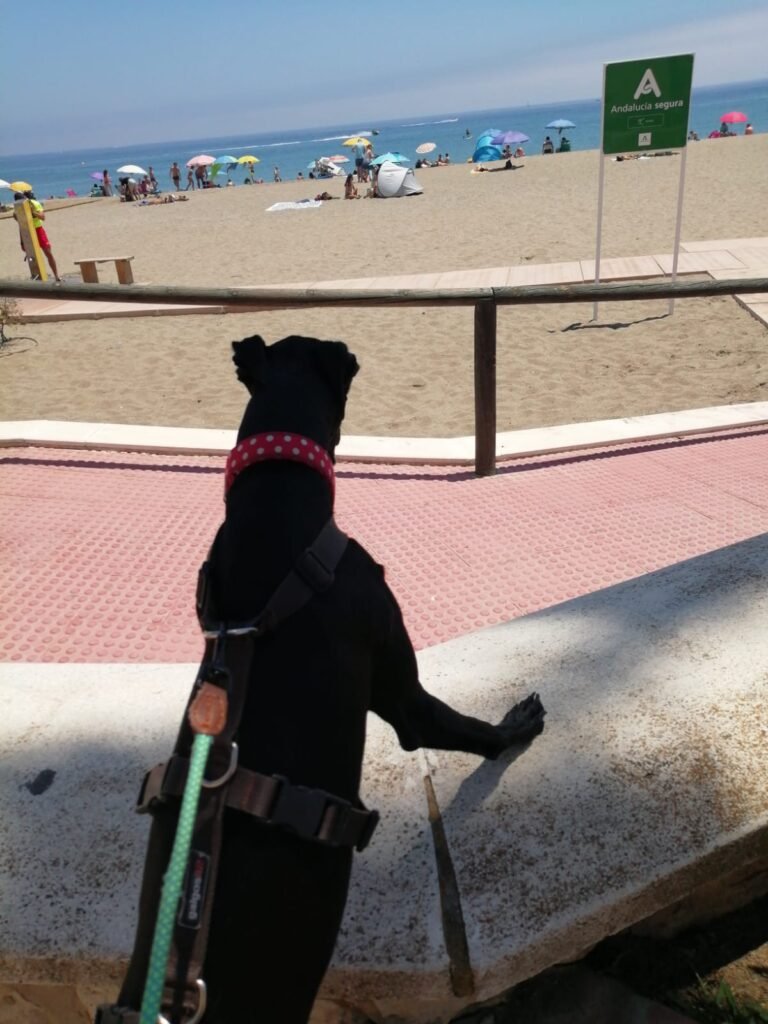
Resources to Learn More
- Watch Yo Galgo: www.yogalgo.com
- Support local rescues: Fundación Benjamín Mehnert, Galgos del Sol, 112 Carlota Galgos
Author Bio
Thomas and Paula are the co-creators of TourCostaDelSol.com, a curated guide to the best tours, villages, and hidden corners of Spain’s southern coast. Thomas, originally from Denmark, and Paula, from Brazil, are a couple based in Málaga with a shared love for slow travel, local food, and uncovering the cultural soul of Andalusia.
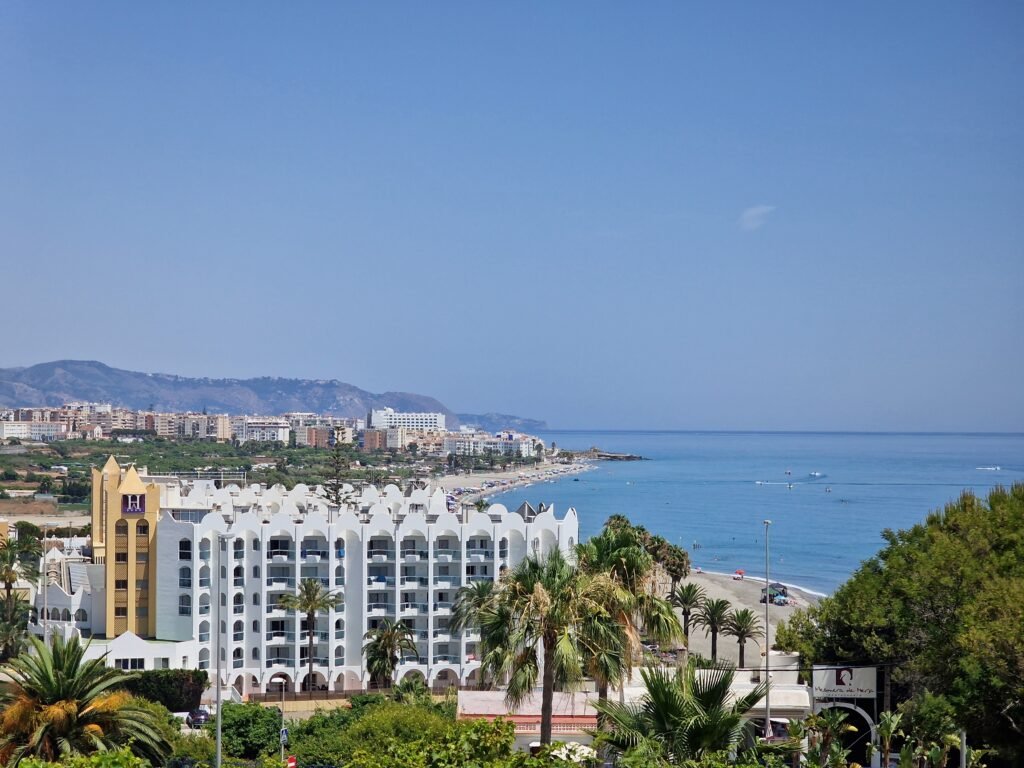
costa del sol costa del sol costa del sol costa del sol costa del sol costa del sol costa del sol costa del sol costa del sol costa del sol costa del sol costa del sol costa del sol costa del sol costa del sol costa del sol
Are you a traveler and would like to submit an article? Check out how to do so here.

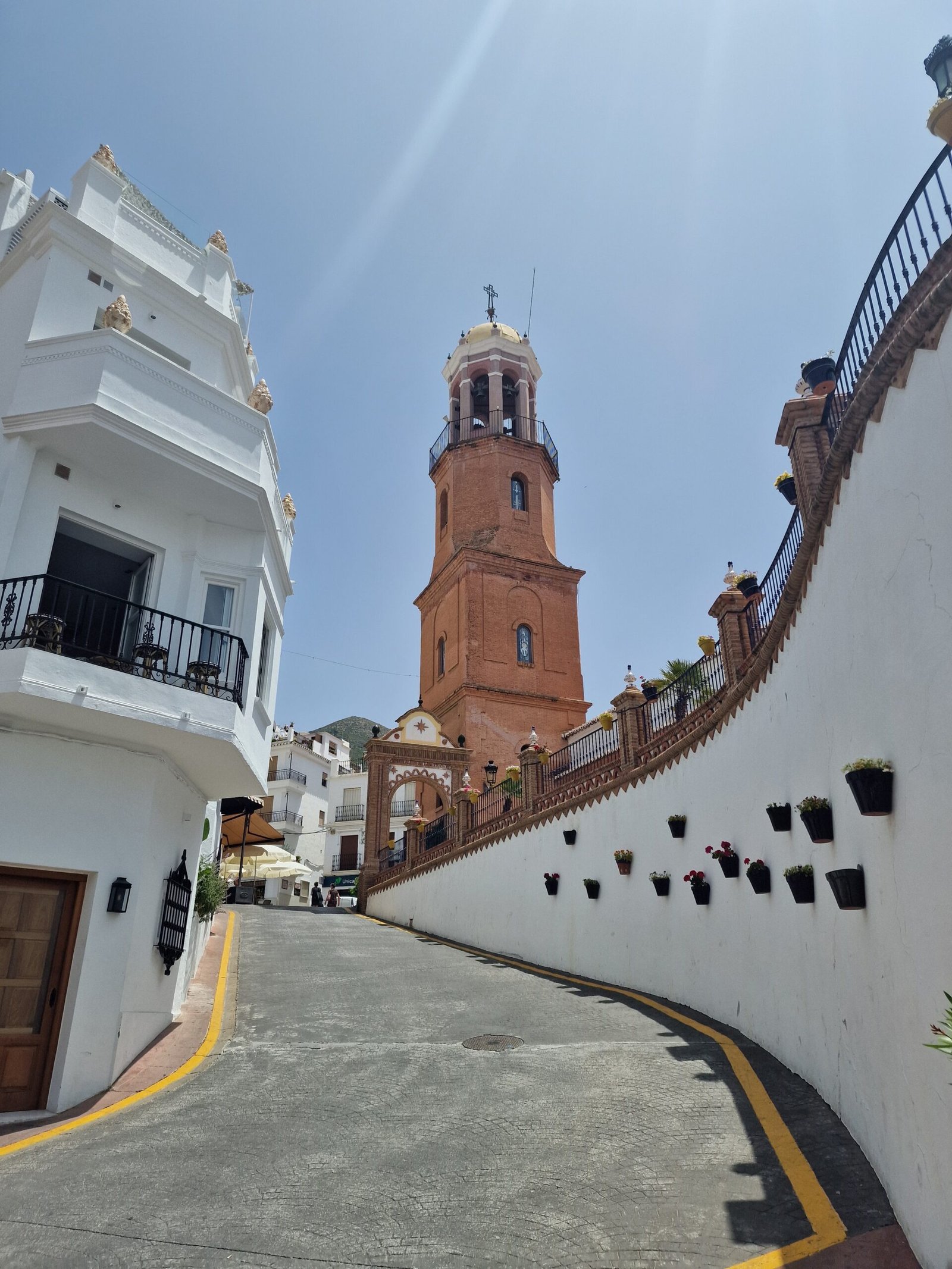




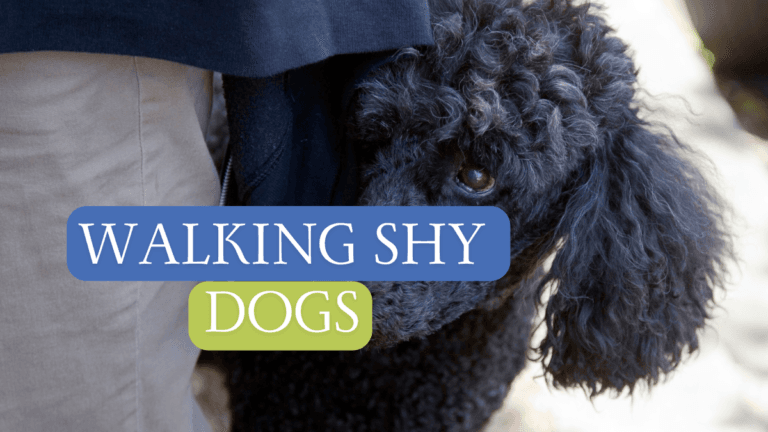
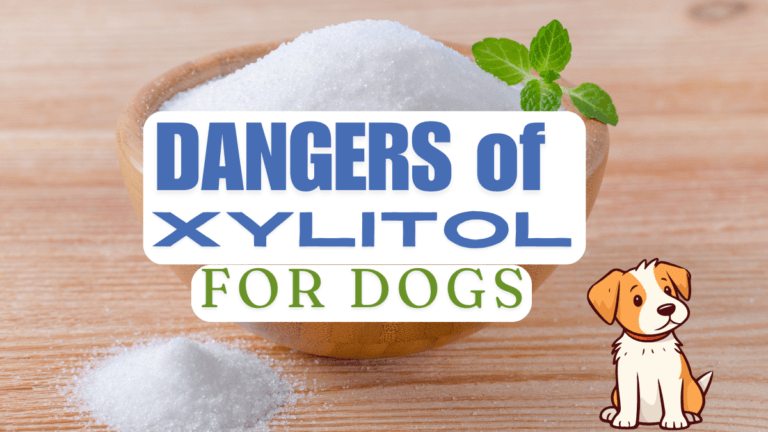
Leave a Reply